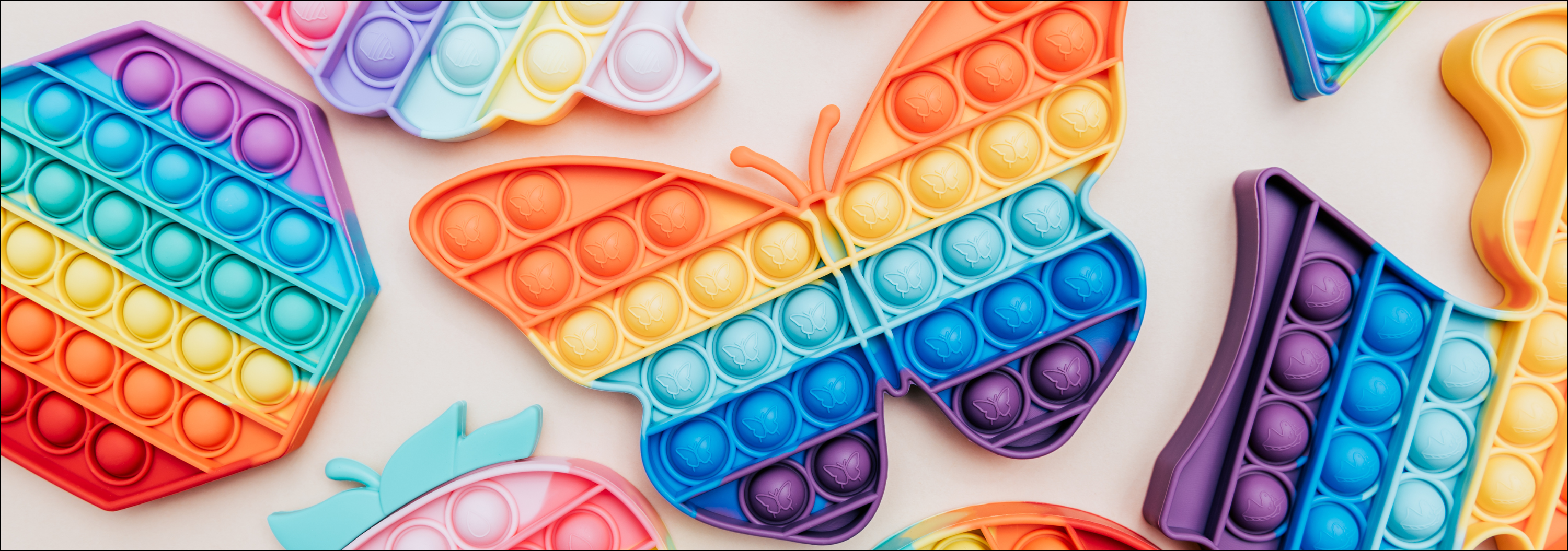Strategies to Help Young People with Autism: Sensory Tools
April is Autism Awareness Month and at PEP, we’re proud of the services we provide that enable young people with autism to thrive. From our PEP Prentiss Autism Center, a Day Treatment Center specializing in students on the spectrum that integrates mental health and special education services during the school day, to our PEP Early Childhood Plus services that provide support to parents navigating their child’s autism diagnosis, PEP has deep knowledge and expertise around neurodivergence. For years PEP has held an internal contest called the “Tools to Use Challenge,” encouraging our experts to highlight the strategies they’re using to enhance the success of the young people on the spectrum.
This year, for Autism Awareness Month, we’re happy to share some of these strategies so that anyone in the community who works with or has a family member with autism can benefit. While it’s true these strategies are helpful for those on the spectrum, they’re also helpful for anyone! Feel free to adapt them to your needs and let us know how they work for you.
What are Sensory Tools?
Some children have difficulty handling the information their senses take in. Sensory processing challenges can arise from all senses – sound, smell, touch, taste, sight, sense of body awareness, movement, balance, and coordination – and can make learning challenging.
If you think of the body like a car engine, sometimes it may be running at “high speed” and sometimes it may be running at “low speed.” At high speed, it may be difficult to pay attention, hard to sit in a chair and a challenge to complete schoolwork. At low speed, it may be hard to concentrate, focus and the individual feel sleepy or seem lethargic.
Sensory tools are tools that can be used to help young people better manage sensory processing challenges. They can help a child become more focused, content, and alert. Considering the sensory needs of a child can make the difference between a calm, organized individual and one who is overwhelmed and over stimulated.
From a sensory standpoint, we can help young people in two ways:
- Provide external sensory regulation
- Provide a tool for them to internally self-regulate
Below you will find universal tools for each sensory system that can be used with all young people to either help them calm down or make them more alert.
Sound
Using music in the background that replicates the heartbeat of 80 BPM is calming. Check out these tracks at 80 BPM.
For those sensitive to sounds, headphones and ear plugs can buffer background noise and allow the young person to concentrate better.
Smell
Scented lotions or play dough with added essential oil can either calm or alert children depending on the scent.
- Calming Scents: lavender, vanilla, ylang ylang, and jasmine. The benefit in your classroom or at home is to provide a scent baseline for “calm.”
- Alerting Scents: peppermint, lemon and cinnamon.
Visual
Natural light and dim lighting versus florescent light is calming. Using “ceiling shades” over the florescent lights help to produce a well-lit room with buffered light. Low clutter environments and a quiet space in the room away from the group is helpful. A head visor and study carrel can block external stimuli in the classroom, while sunglasses can reduce light sensitivity.
Oral
Sucking on hard candy and suckers, chewing gum and warm liquids are all ways to provide calming input. By contrast, intense flavors, sour, mint, cinnamon, and cold, icy, and carbonated drinks are alerting.
Tactile
Fidgeting and added weight provide calming input to the sensory system. Tools often used are vests, weighted vests/blankets, and fidgets. Heavy work such as push-ups, walking with a heavy backpack or doing a chore that requires carrying heavy books, a crate or reams of copy paper can also provide calming input.
Movement
Incorporating brain and movement breaks into the daily schedule is another way to accommodate sensory needs in the classroom or at home. This PEP article provides a lot of brain breaks ideas.
The therapy ball is the ultimate sensory modulation tool because it allows users to self-regulate without being conscious of it. Children can continuously regulate themselves. If they get tired, they may start bouncing; when they are satiated, they may rock or bounce slowly. No instruction is needed!
Ideas for Accommodating Sensory Needs in the Classroom
Educators can encourage self-regulation in the classroom using sensory tools. Families can also use these ideas at home to support their child’s sensory needs. It’s important to note that sensory tools should not be used as a reward and should not be taken away from students. It’s also important to practice using sensory tools, including role playing how to use them, ahead of time. Sensory tools are not intended to be an intervention aimed to a particular group of students, but general support that is always available.
- Create a classroom sensory area. Discount stores often sell a variety of inexpensive items that can be used as sensory tools.
- A sensory area could be as simple as separate bin for each student with some of the above tools or it could be as fancy as a partitioned-off area that includes a safe, relaxation space.
- Teach students how to use each item correctly.
- Make sensory tools easily accessible to students.
- Use clear and consistent time limits. For example, set a timer, engage in break, and then return to scheduled activity.
Learn More
Sensory tools can help young people with autism feel more comfortable and stay regulated, but they can be helpful for anyone. Sensory challenges can impact anyone. Learn more about Positive Education Program and its autism services on our website.
